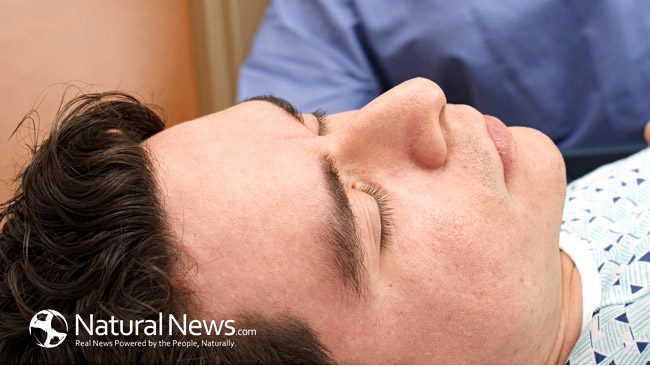The following is a guest post by Cheryl Yamamoto.
A good night’s sleep is essential for our physical health and emotional well being. It allows the body to repair and rest neuronal functions, allows for release of important hormones and keeps our metabolic and immune systems working at optimal levels. And of course, helps improve memory, activity levels and elevates our moods.
It is estimated that 40 million Americans have some type of sleep disorder and of those 18 million have sleep apnea.
What is Sleep Apnea?
Sleep Apnea is the inability to breathe properly or the limitation of breathing during sleep. Obstructive sleep apnea syndrome (OSAS) is when the structures in the back of the mouth and throat collapse. As the tongue relaxes, it obstructs the airway during sleep. When this happens breathing is interrupted and there can be a lack of oxygen for up to 10 seconds.
This occurs repeatedly throughout the night and interrupts normal sleep patterns, leaving you tired when you wake up in the morning and a temporary lowering of oxygen levels in your blood. Lowered oxygen levels may impair organ functions.
OSAS is also known to contribute to hypertension, stroke, diabetes, depression and congestive heart disease and failure.
What are the causes of OSAS?
OSAS is typically caused by an obstruction of the airways such as narrowed nasal passages, enlarged tonsils or adenoids, blocked sinuses, forward head posture, incorrect jaw and tongue position, and obesity.
Symptoms of OSAS:
• Not feeling rested upon waking
• Feeling sleepy during the day
• Waking with a headache
• Snoring, gasping or choking during sleep
• Restless sleep
• Halted breathing
• Irritability, moodiness during the day
• Difficulty concentrating, memory challenges
• Acid reflux, sour taste
• Teeth grinding or bruxism
Children may also show signs and symptoms of sleep apnea:
• Snoring
• Hyperactivity or attention problems during the day
• Restless sleep and/or waking up often
• Bed wetting
What can you do?
If you feel you have any of these symptoms, you may have OSAS. It is recommended that you talk with your medical doctor/pediatrician about sleep disorders and get a proper diagnosis so that you can take the appropriate steps in treating OSAS.
The most commonly used treatment is the use of a CPAP (continuous positive airway) and is best for severe cases. However, some people are not candidates for the CPAP, especially for those with mild or moderate symptoms. Alternative treatments are weight loss, reduced neck circumference, oral appliances (OA) that position the mandible forward during sleep to allow more room for the tongue and thereby keeping the airway open, lifestyle changes such as changing sleep habits, and surgery to reduce structures in the back of the mouth.
Myofunctional Therapy can be an effective alternative for moderate OSA
Myofunctional Therapy, also known as oral myology, is the neuro-muscular re-patterning of the oral and facial muscles. This is done through a series of exercises for the tongue, soft palate and pharyngeal walls used in swallowing, breathing, suction and speech.
Research done by Katia Guimaraes et al, at the Sao Paulo Medical School, Sao Paulo, Brazil found that oropharyngeal excercises reduced upper airway collapsibility during sleep in patients with OSAS. The study also found that tongue exercises done for 20 minutes/day for an 8 week period reduced snoring.
Re-patterning the muscles of the tongue and soft palate showed positive effects on the upper airway structures by promoting correct tongue and jaw position.
At the end of the study, neck circumference was also reduced even though the study participants did not lose any weight. Their results suggest that oropharyngeal exercises are a promising alternative for the treatment of OSAS.
The greatest results for sleep apnea can be achieved when there is a combined approach by many health care providers and specialists. Myofunctional therapy is an adjunct to the care and treatment of OSAS.
See more about Cheryl Yamamoto at MyoFunWorks.com.





